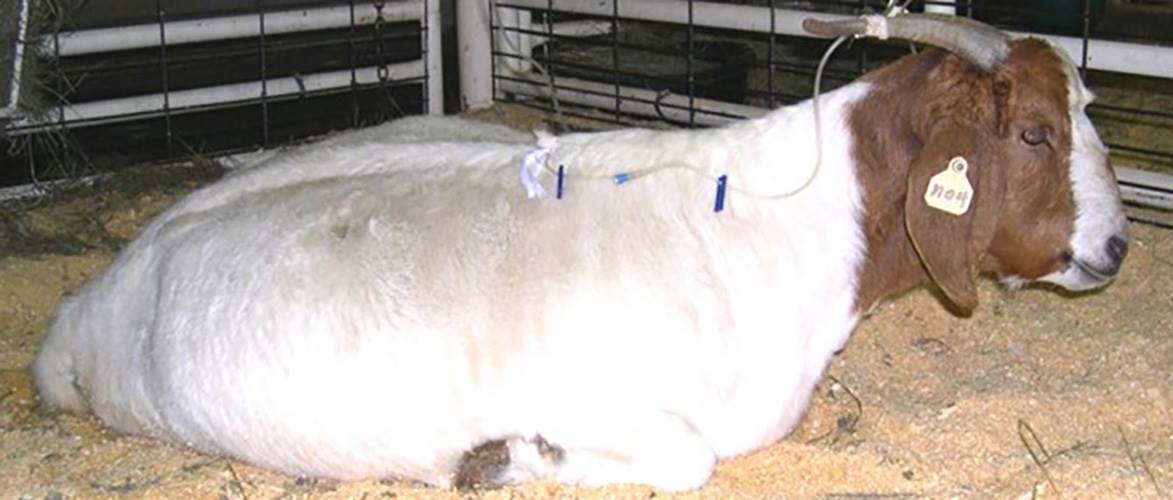
Keep pregnancy toxemia on the radar
Thursday, February 14, 2019
Spring is lambing and kidding season for Oklahoma’s sheep and goat producers. Caring for late pregnant ewes and does is vital to ensure healthy, viable newborns.
Pregnancy toxemia is a common metabolic disease seen in ewes and does. It typically occurs in the last 50 days of gestation, with the highest incidence approximately two weeks prior to due date when the fetal growth rate (and thus energy demand) is at its peak.
Stress — such as transportation, inclement weather, decreased quantity or quality of feed offered, or untreated disease(s) such as internal parasites, pneumonia, foot problems, etc. — often factors into pregnancy toxemia.
Pregnancy toxemia is most commonly seen in older and obese ewes/does carrying multiple fetuses. They cannot consume enough feed to meet the demands of fetal growth, which puts them in a state of negative energy balance. As a result, energy is derived through the mother’s fat stores, eventually leading to ketones forming in the blood. Persistently high blood ketones lead to pregnancy toxemia.
Clinical signs of pregnancy toxemia are non-specific at first and may include lethargy, poor appetite or a stiff walk. As the condition progresses, affected ewes/does go off feed, show swollen and painful feet, and spend most of their time lying down.
Diagnostic tests to confirm pregnancy toxemia include measuring blood or urine ketone levels and confirming the number of live fetuses via ultrasound.
Propylene glycol drench is the main on-farm treatment for ewes/does that are still eating. Any concurrent diseases should be treated as well. Animals that are completely off feed should be examined by a veterinarian and treated more aggressively with intravenous fluid therapy. Ewes/does not responsive to medical therapy may have to be induced or undergo a C-section.
If left untreated, severe pregnancy toxemia can be fatal to both the mother and her fetuses. Preventing pregnancy toxemia is key.
To prevent pregnancy toxemia, follow these recommendations:
1. Ensure a good body condition score at breeding (3/5).
2. Get an ultrasound pregnancy check and separate dams with multiple fetuses to monitor them throughout gestation and ensure proper nutrition.
3. Increase the quantity and quality  of nutrition starting the last two months of gestation, peaking two weeks prior to lambing/kidding.
4. Closely monitor urine ketone levels of ewes/does in late pregnancy, especially if showing clinical signs of pregnancy toxemia. Urine ketone dipsticks are available at local pharmacies.
As always, consult your veterinarian if you have questions or concerns about your pregnant ewes/does.
